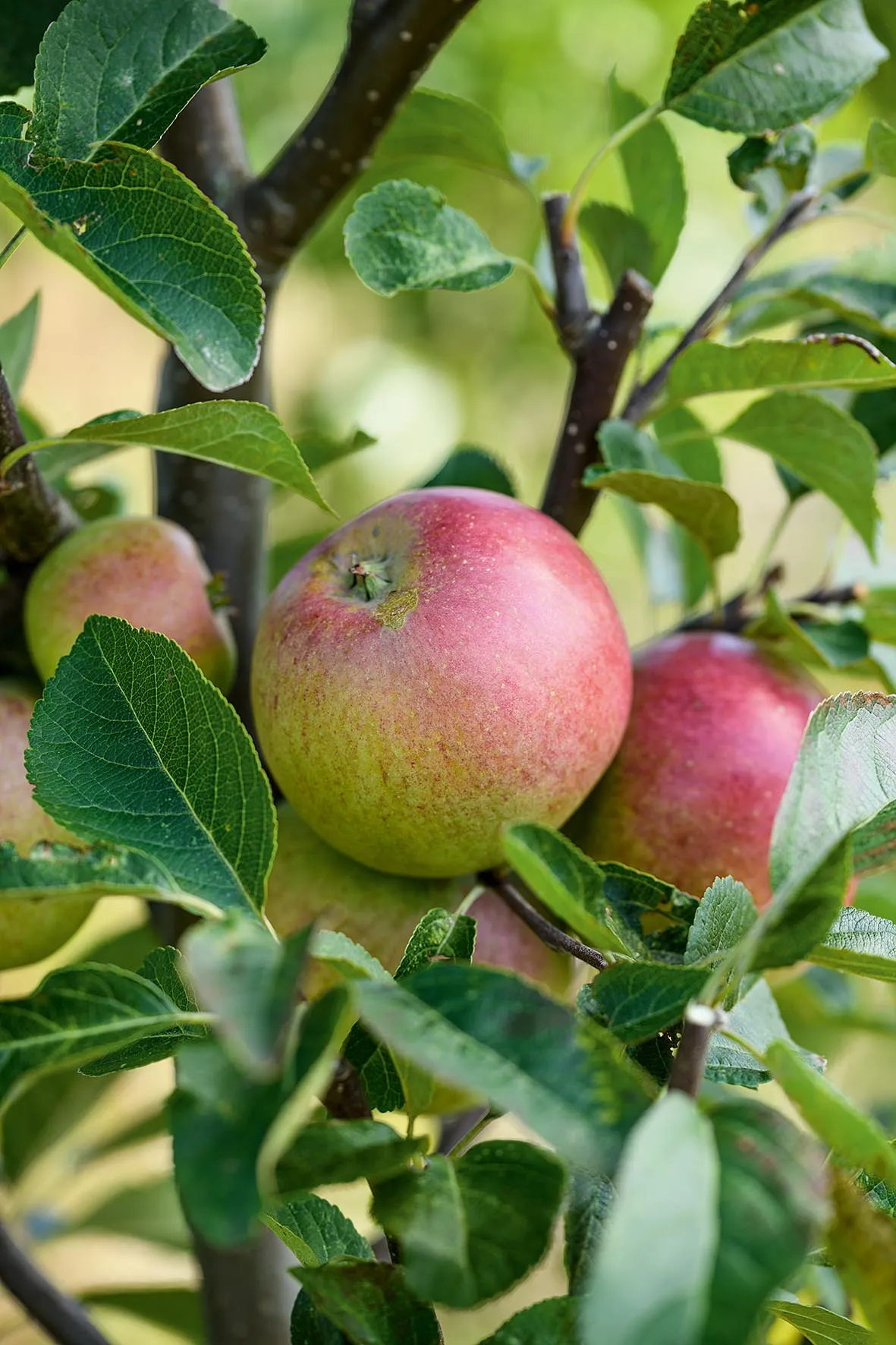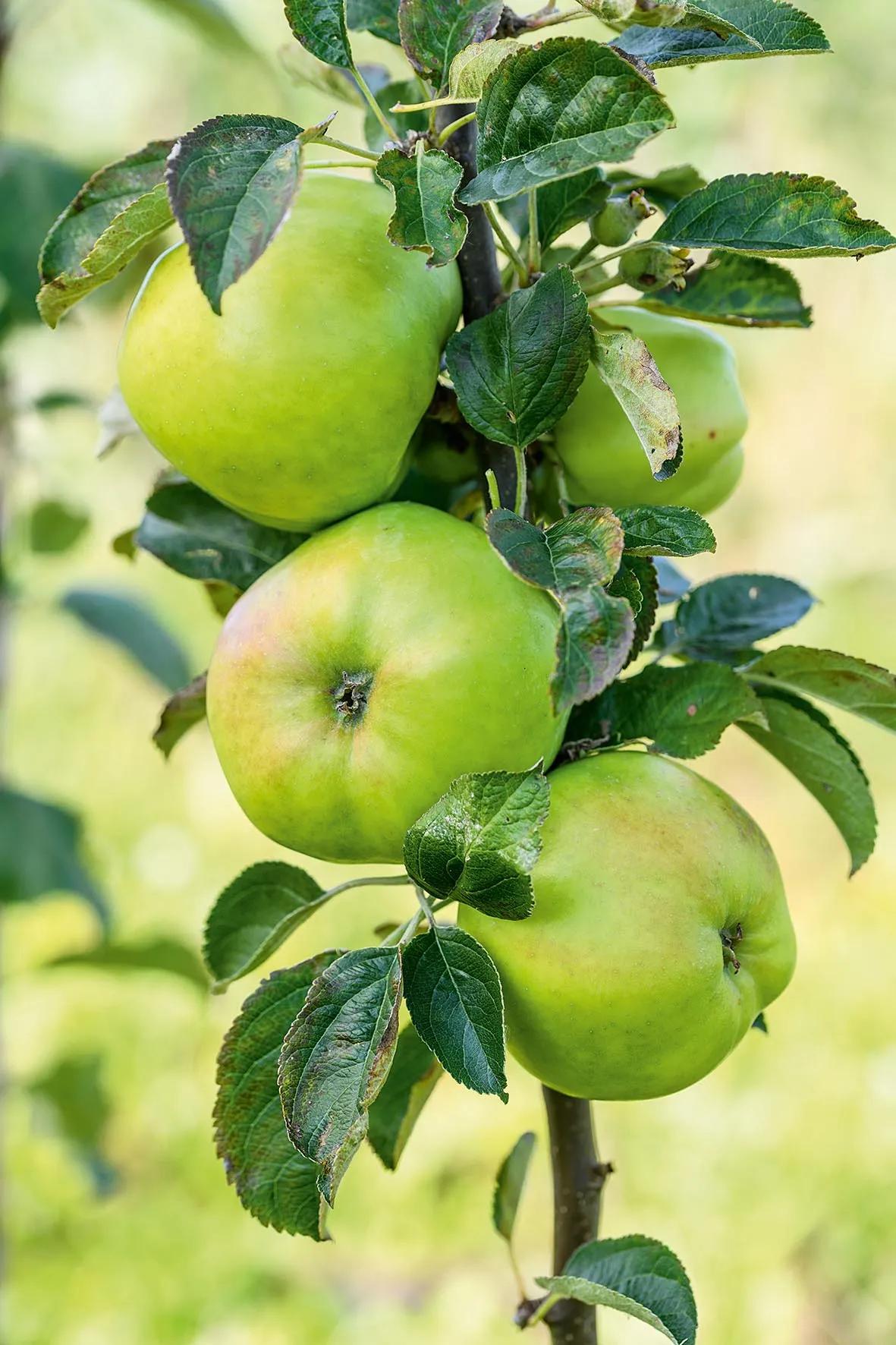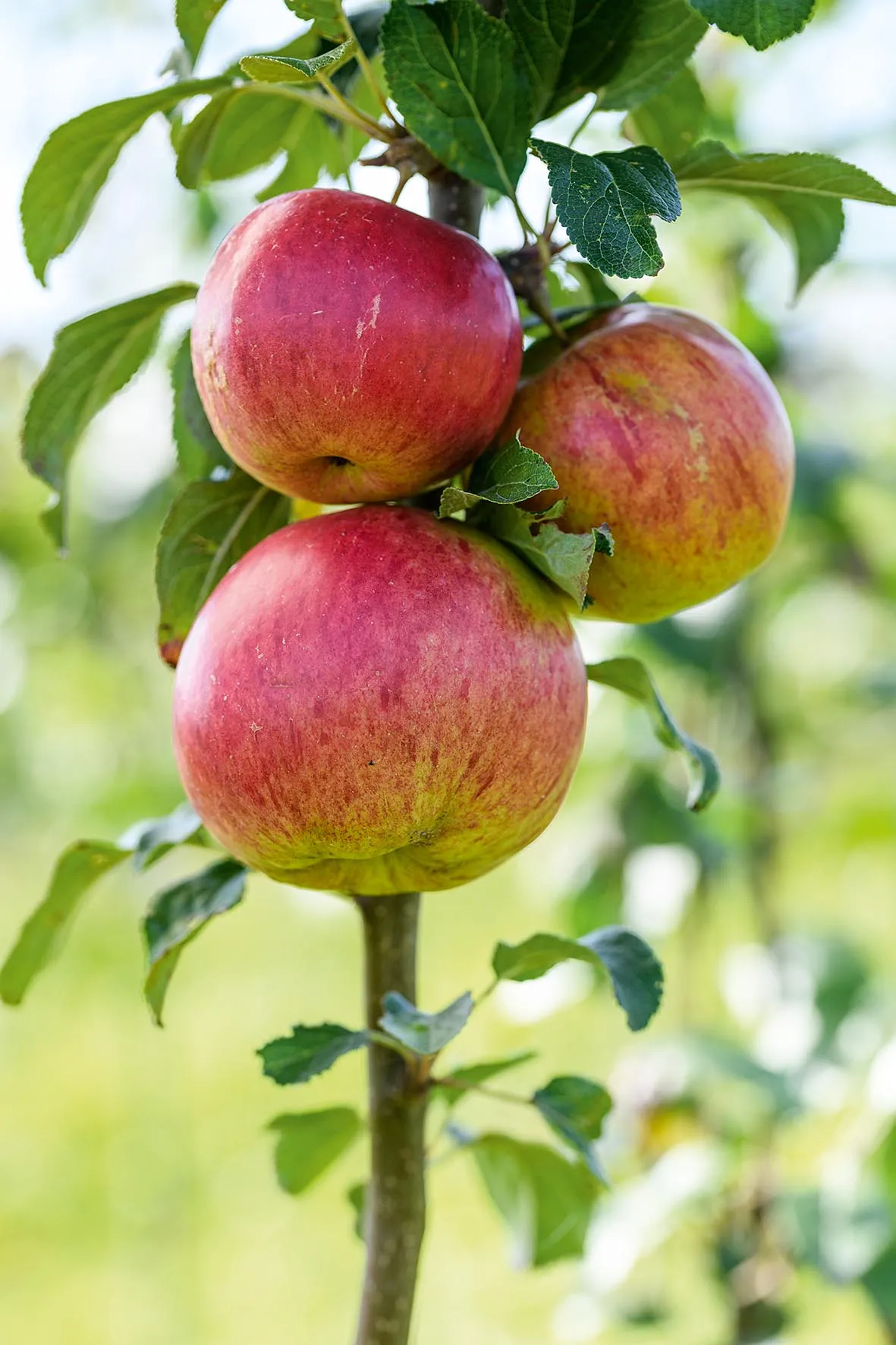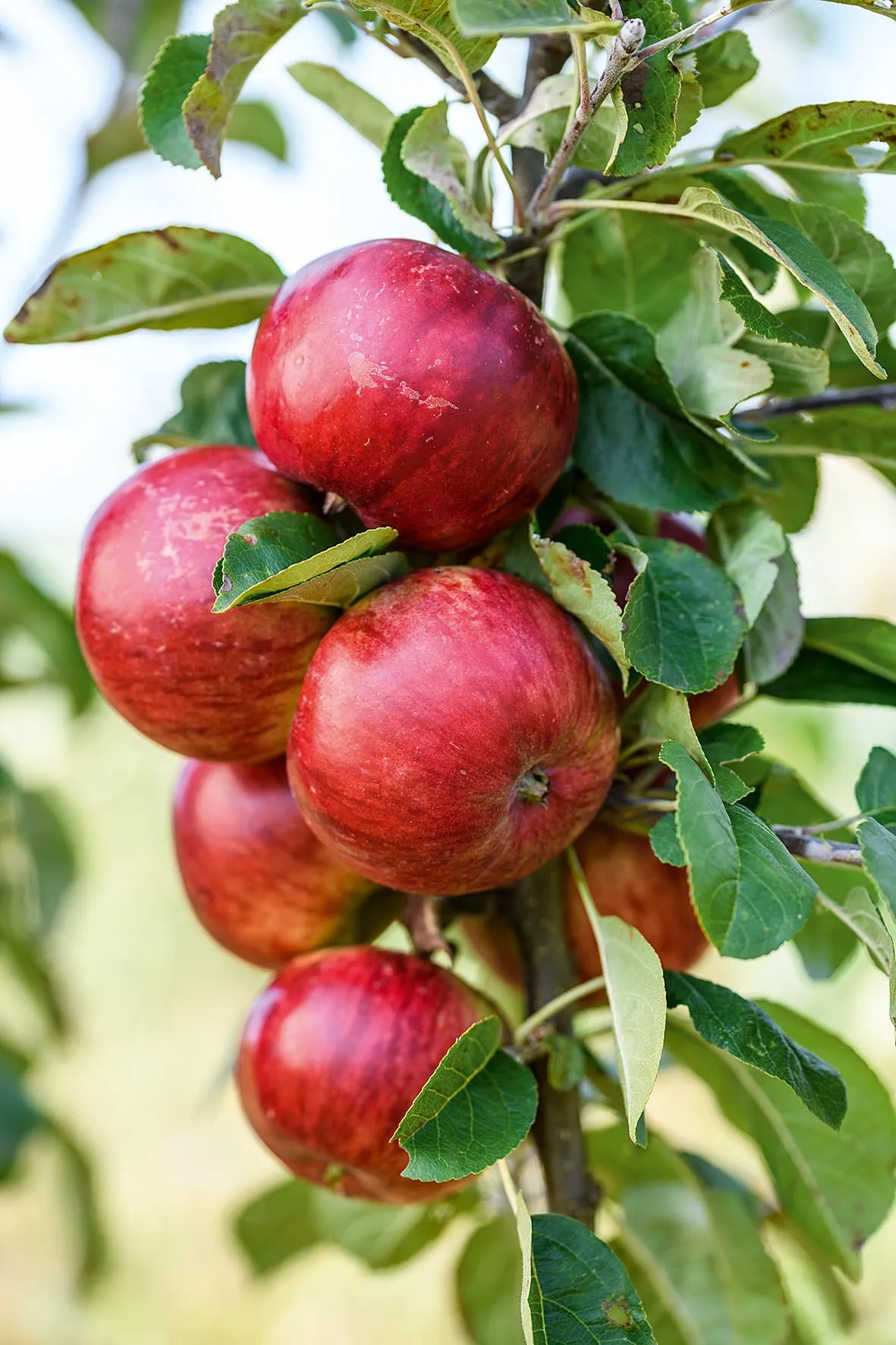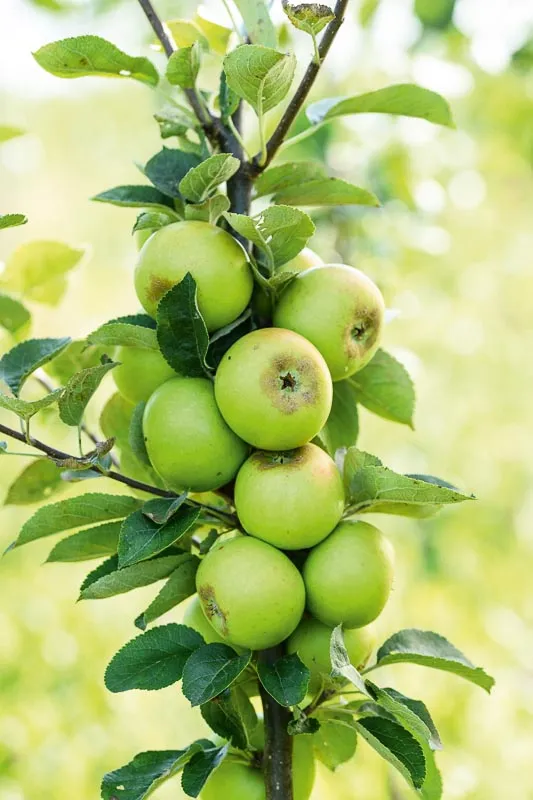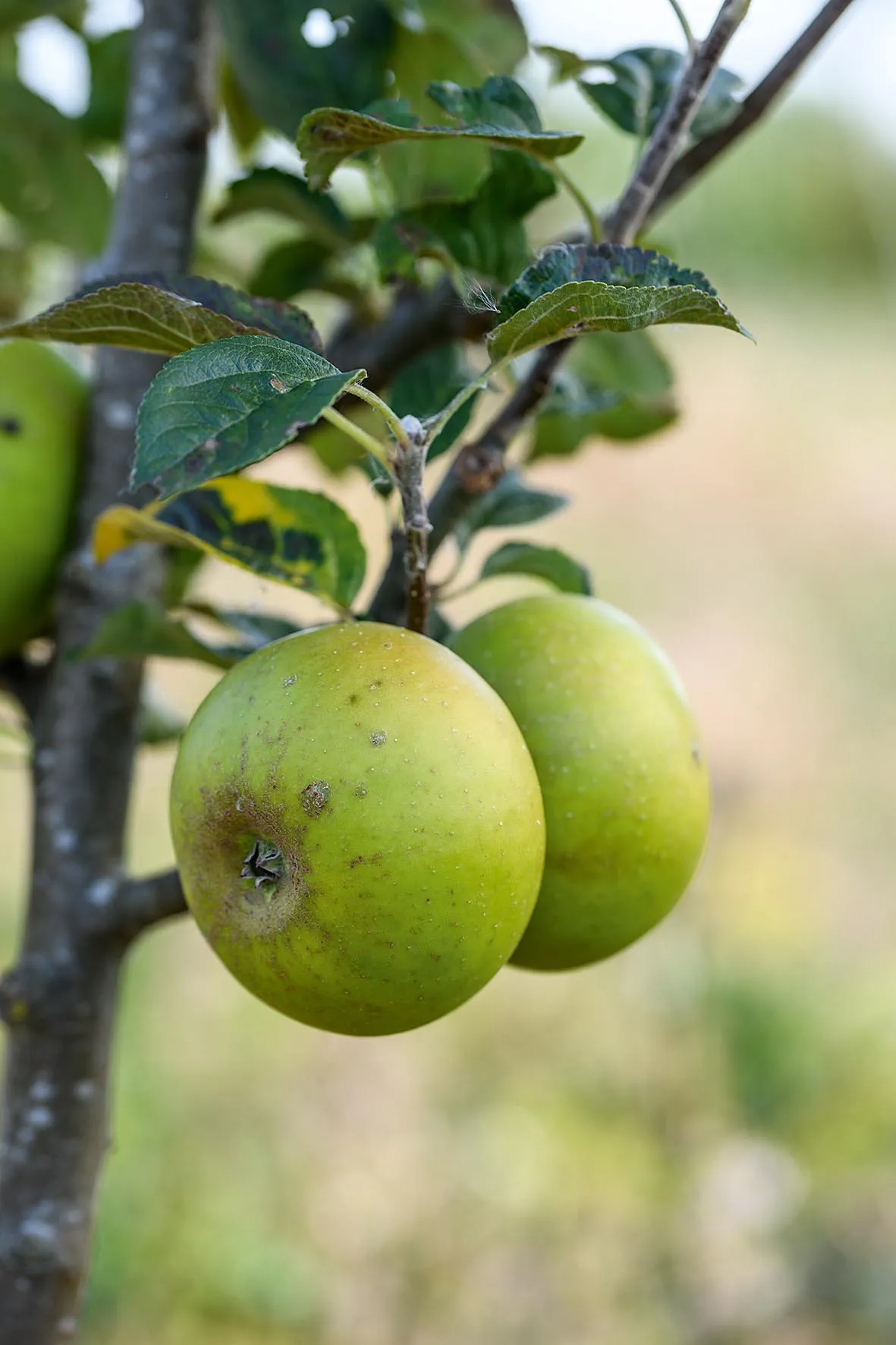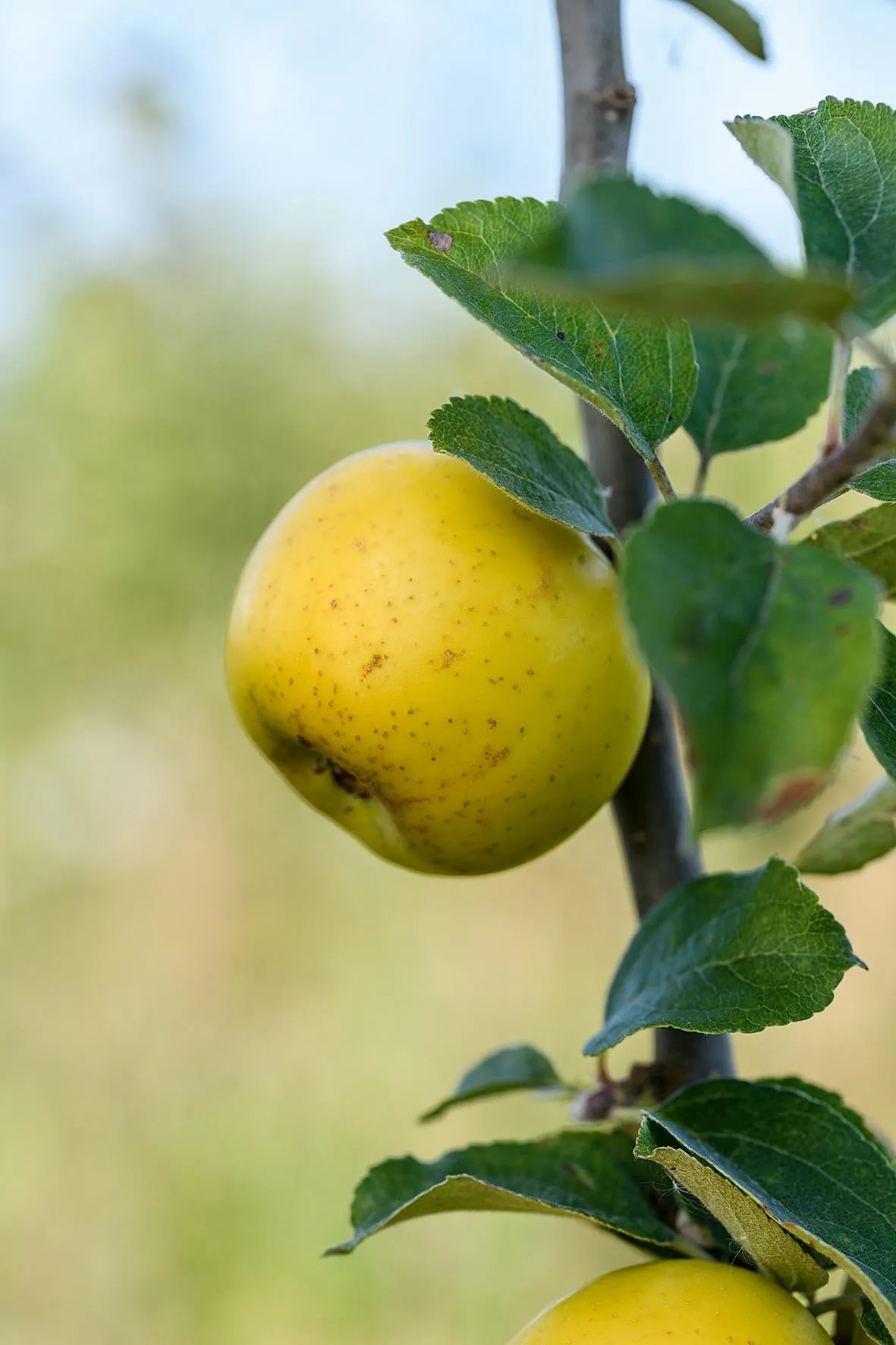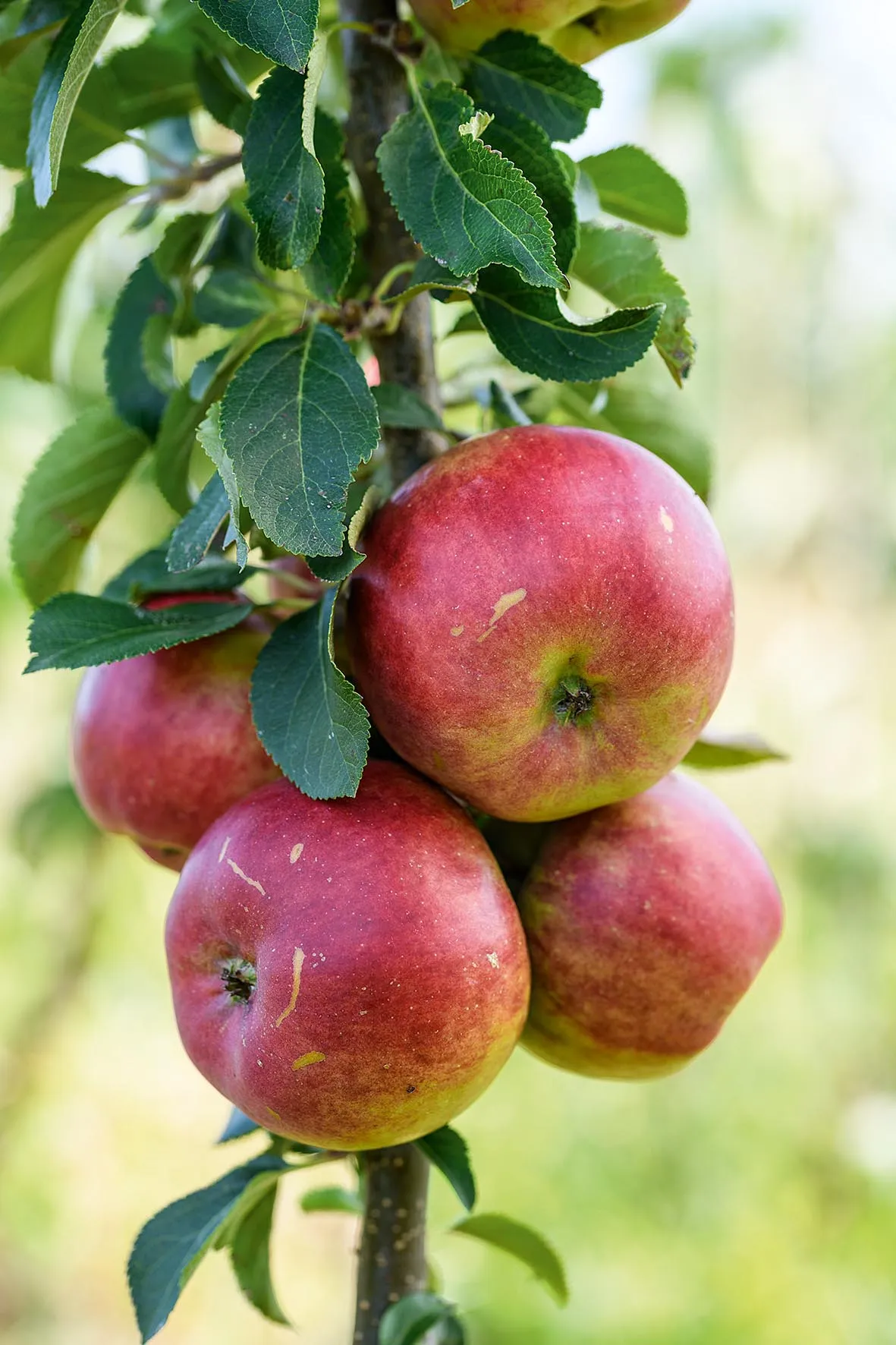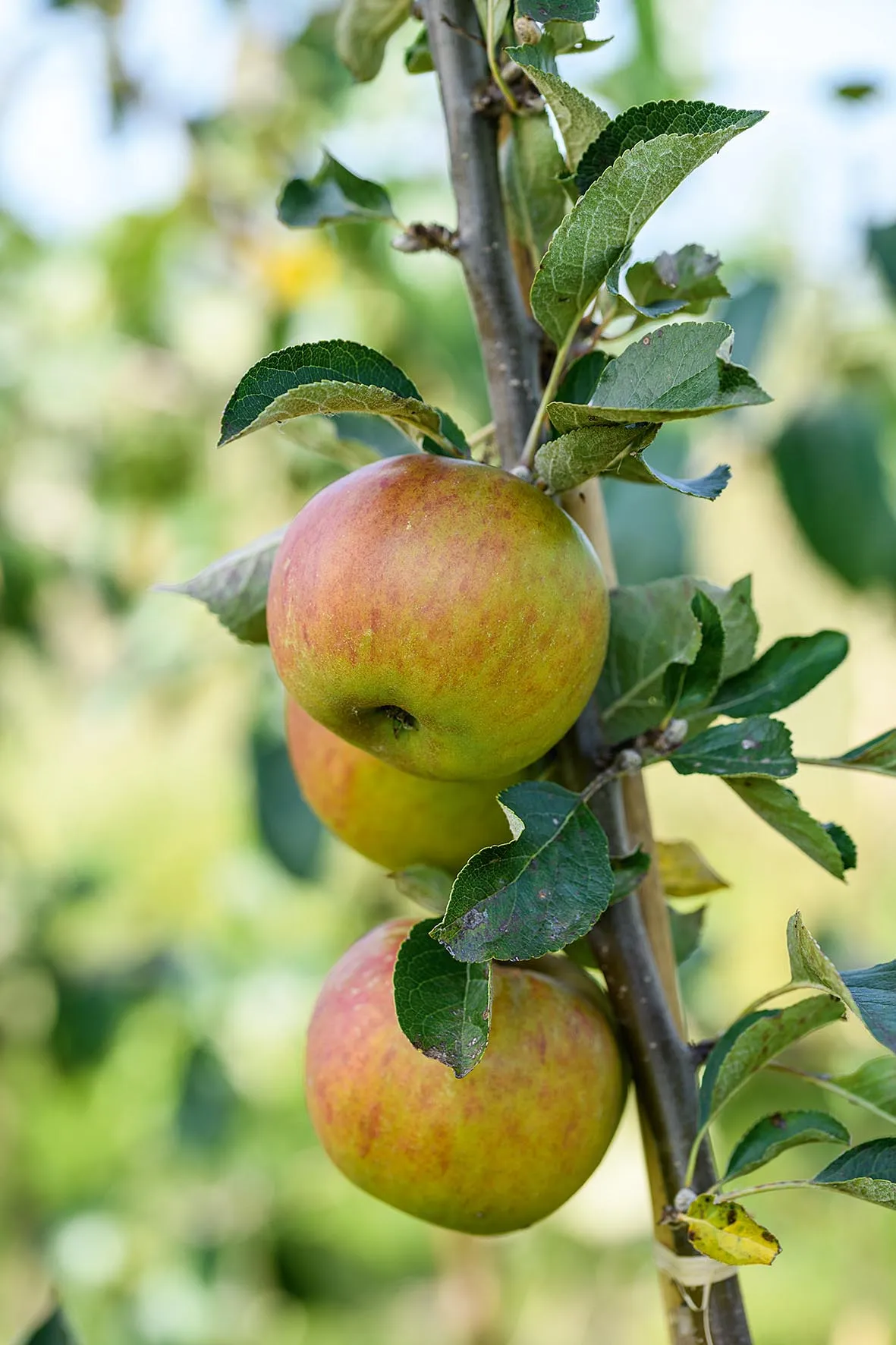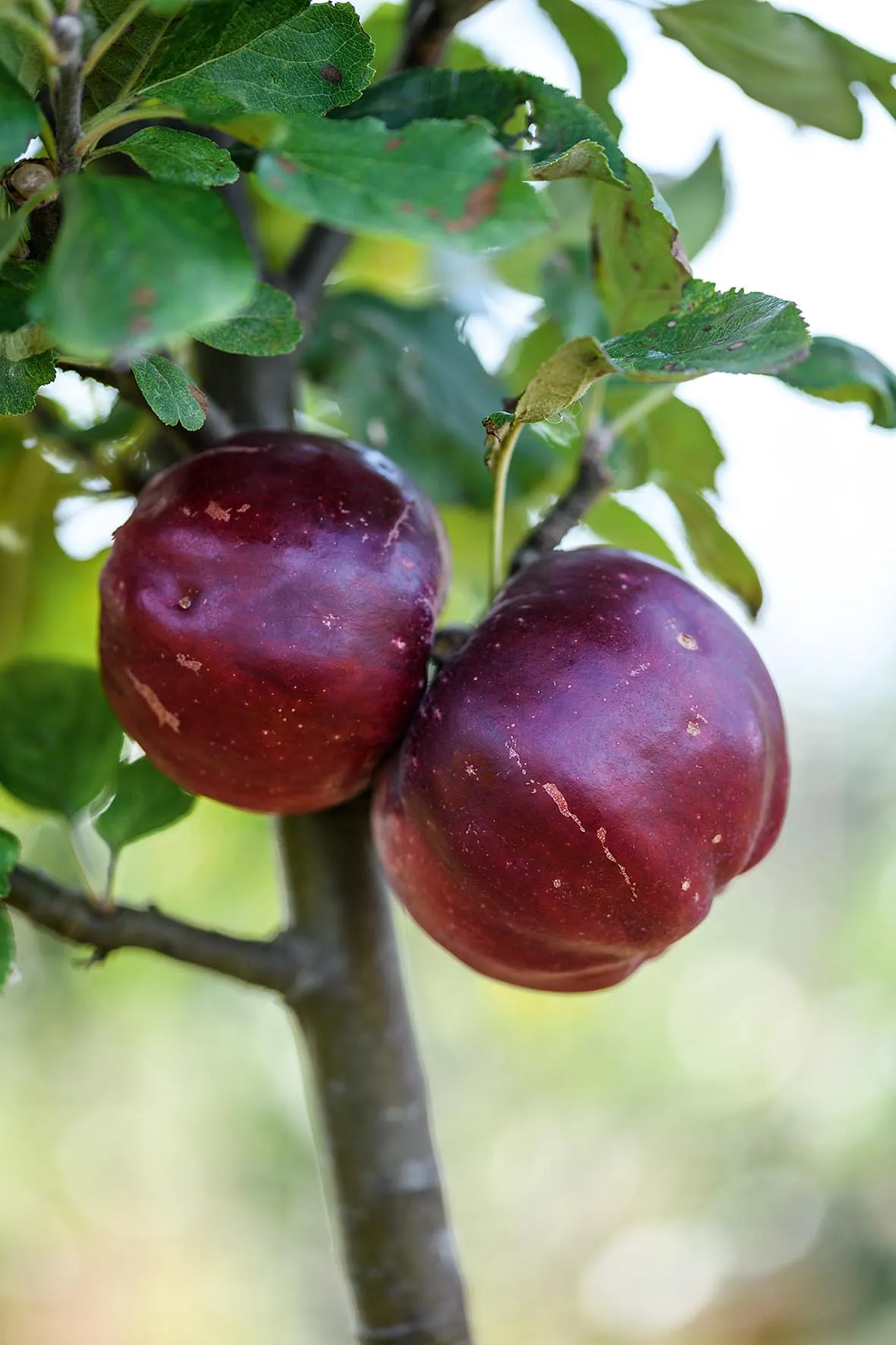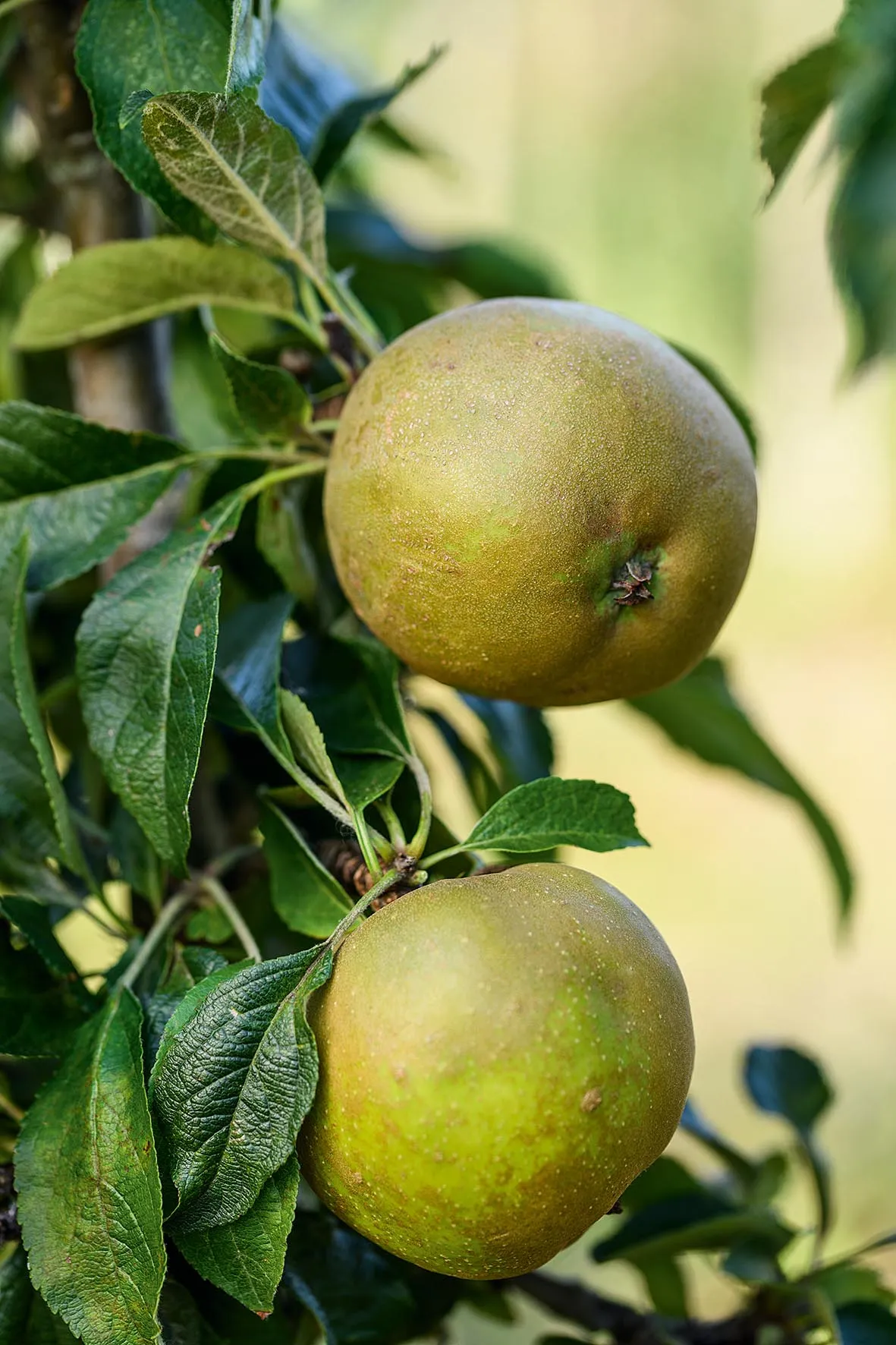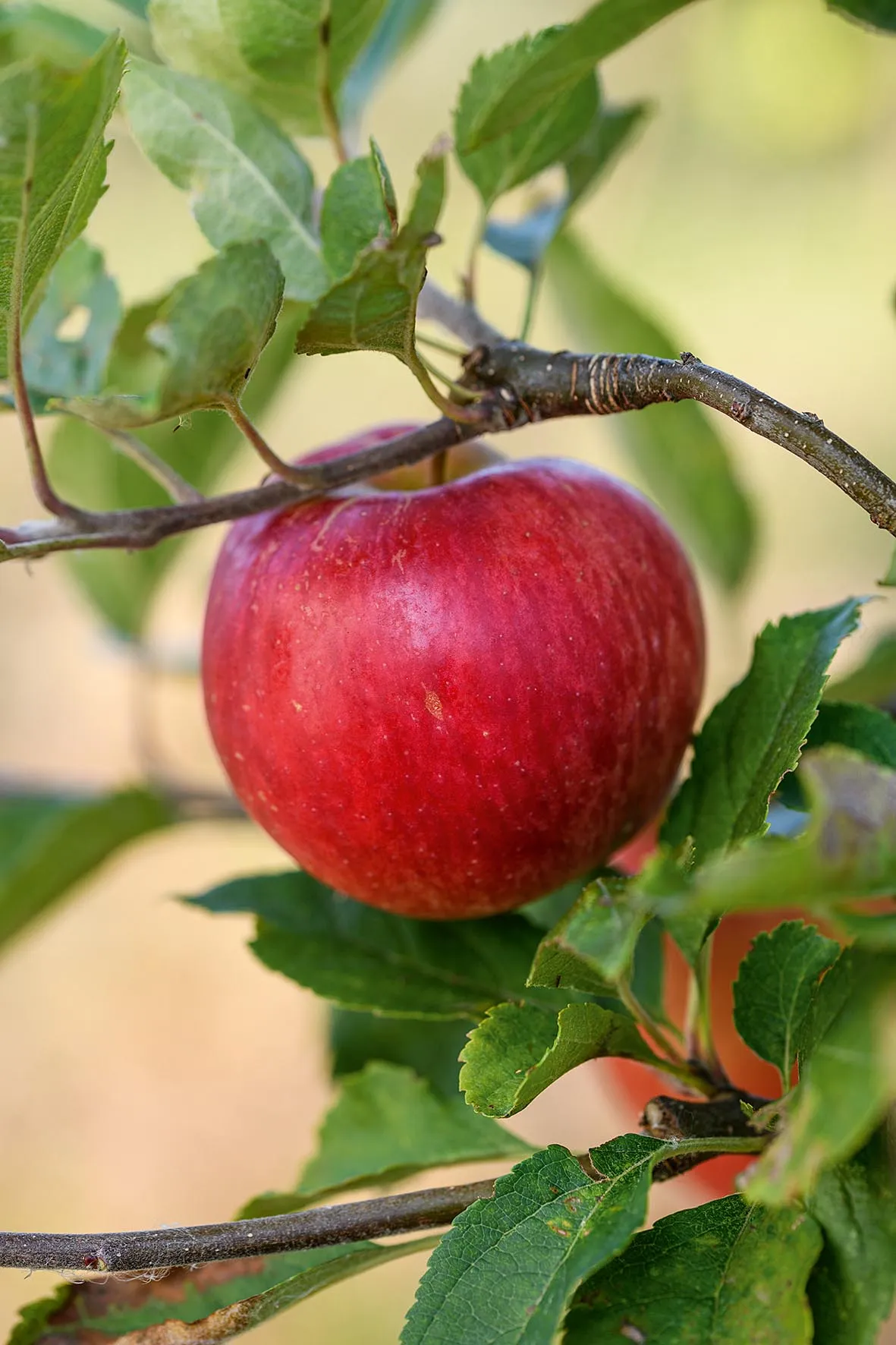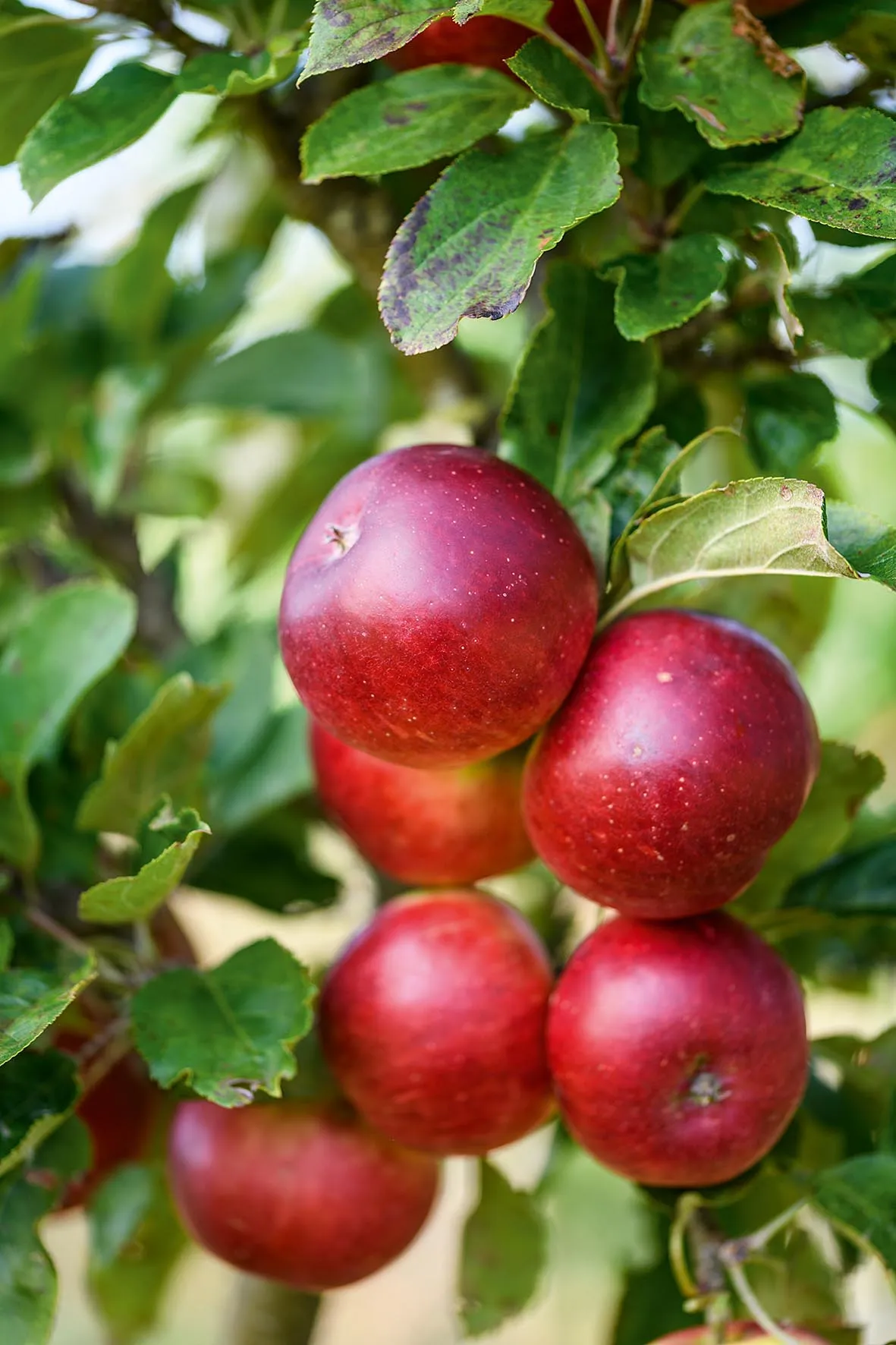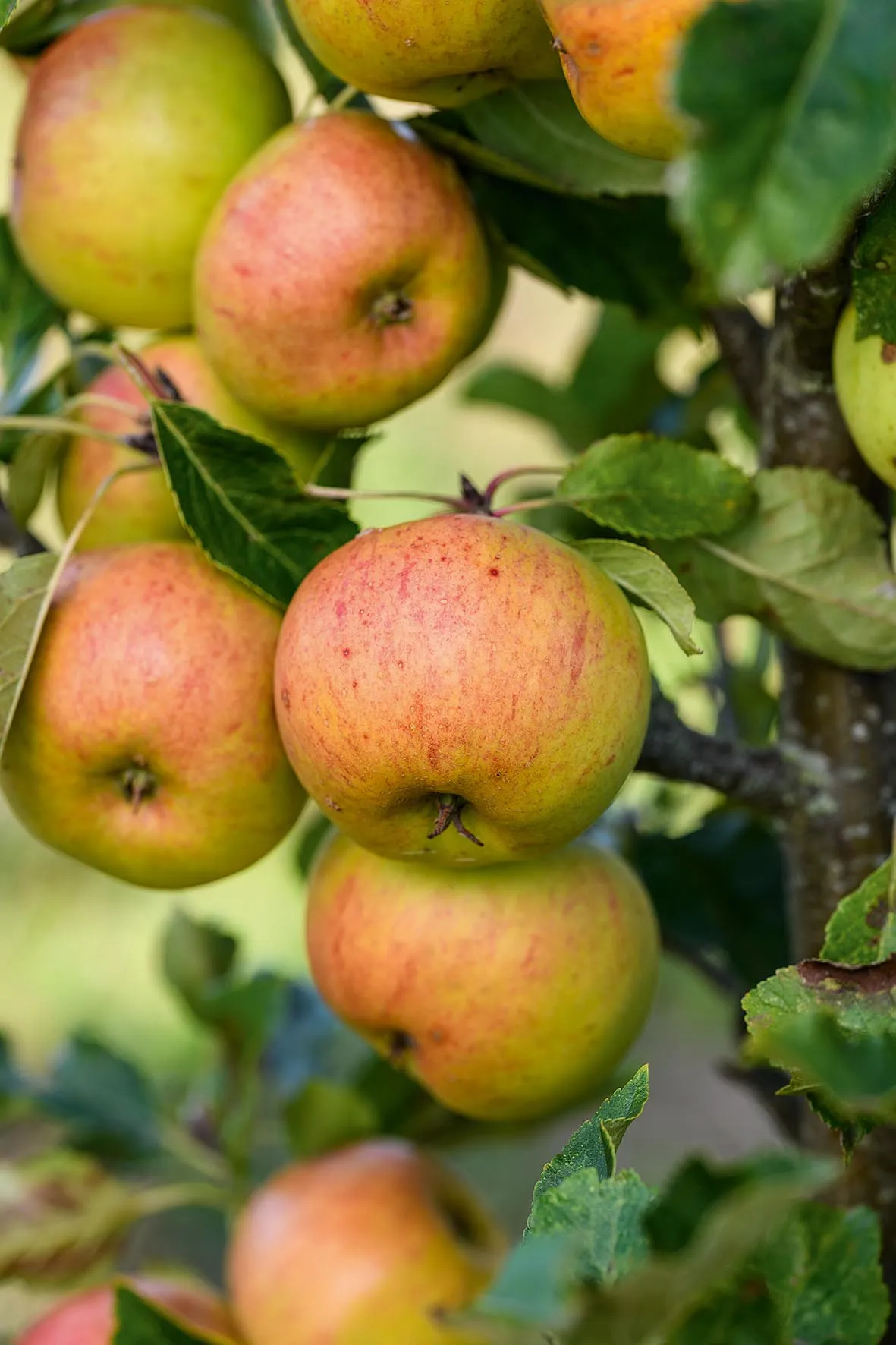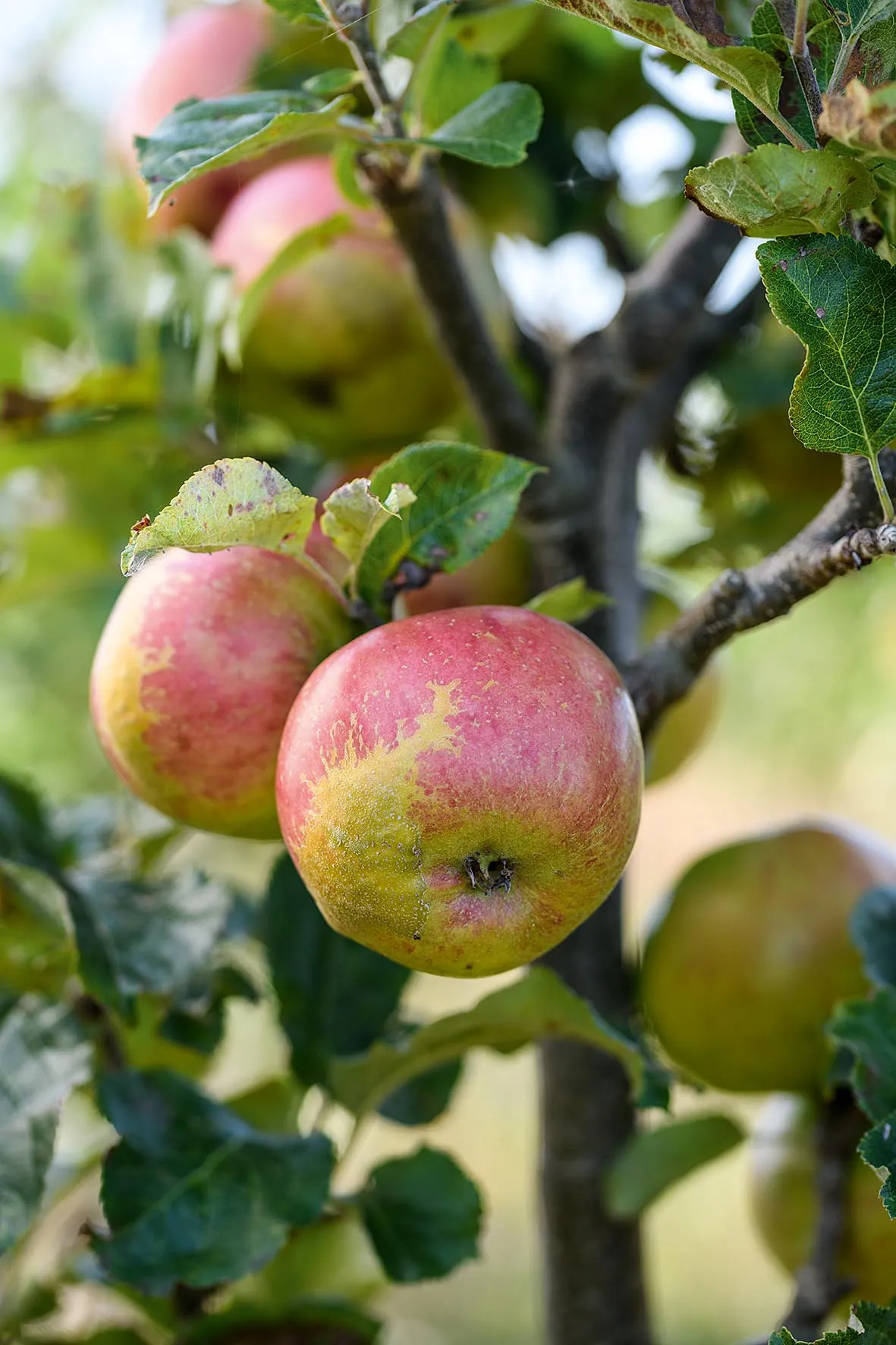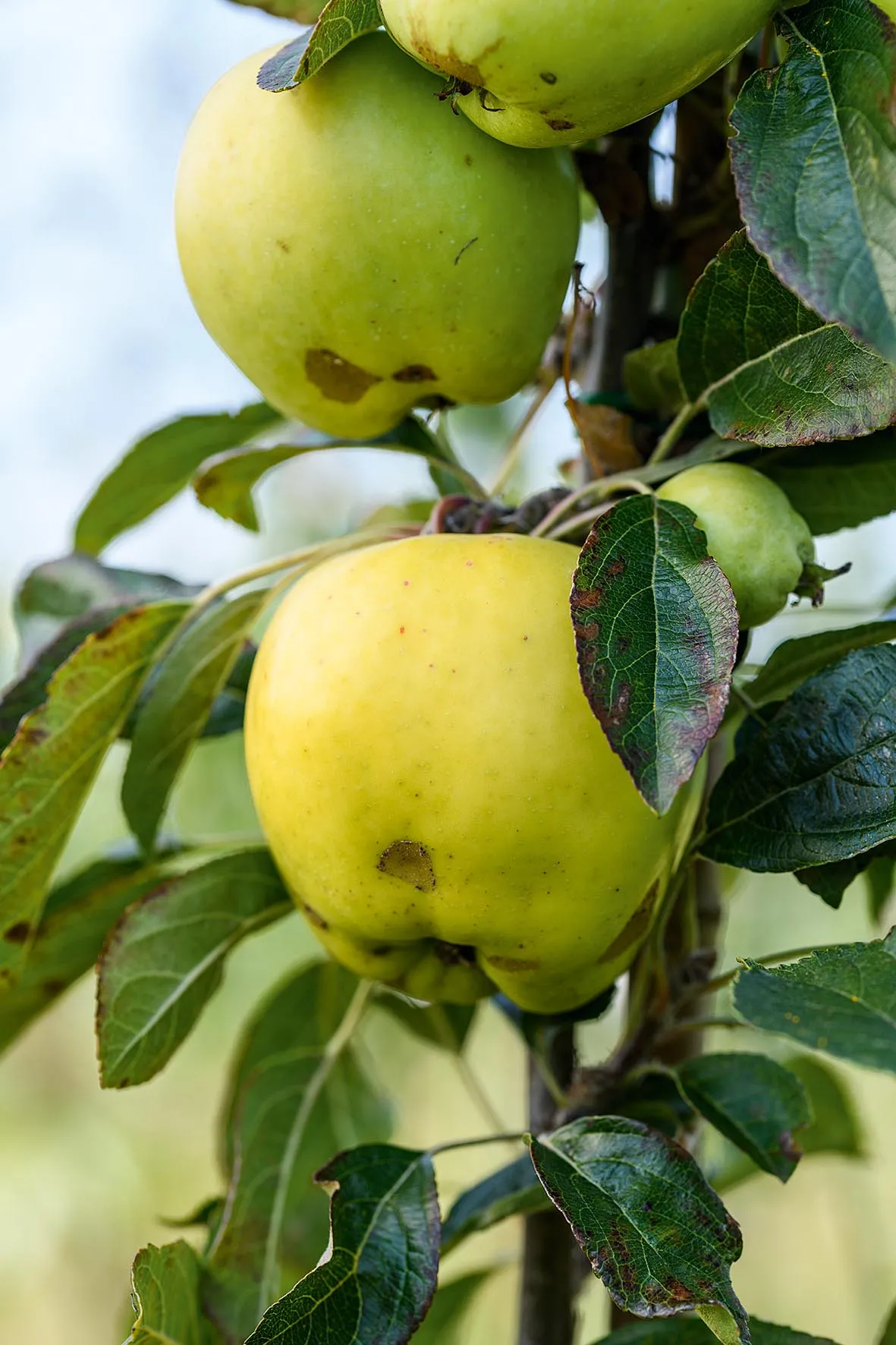Royston Valentine Roger started with a modest half acre near Pickering in Yorkshire in 1913. He began growing alpines that could be cultivated to a saleable size in just three months, to get the business off the ground. More than 100 years on, RV Roger is now a third-generation family-run nursery, growing over 450 varieties of field-grown top fruit with many other strings to its bow, including field-grown roses, extensive bulb collection and a nursery.
But in the north of England, the nursery is best known for its magnificent, gold medal-winning, tiered apple displays at the Harrogate Flower Show, showcasing its extensive range of more than 240 heritage and modern cultivars. This has not always been the case, through its history it has specialised in different areas, adapting to the horticultural requirements and the needs of the country – from ornamental trees in the 1920s and 1930s, through fruit trees in the Dig for Victory war efforts, to roses, growing up to 240,00 every year by the 1960s.
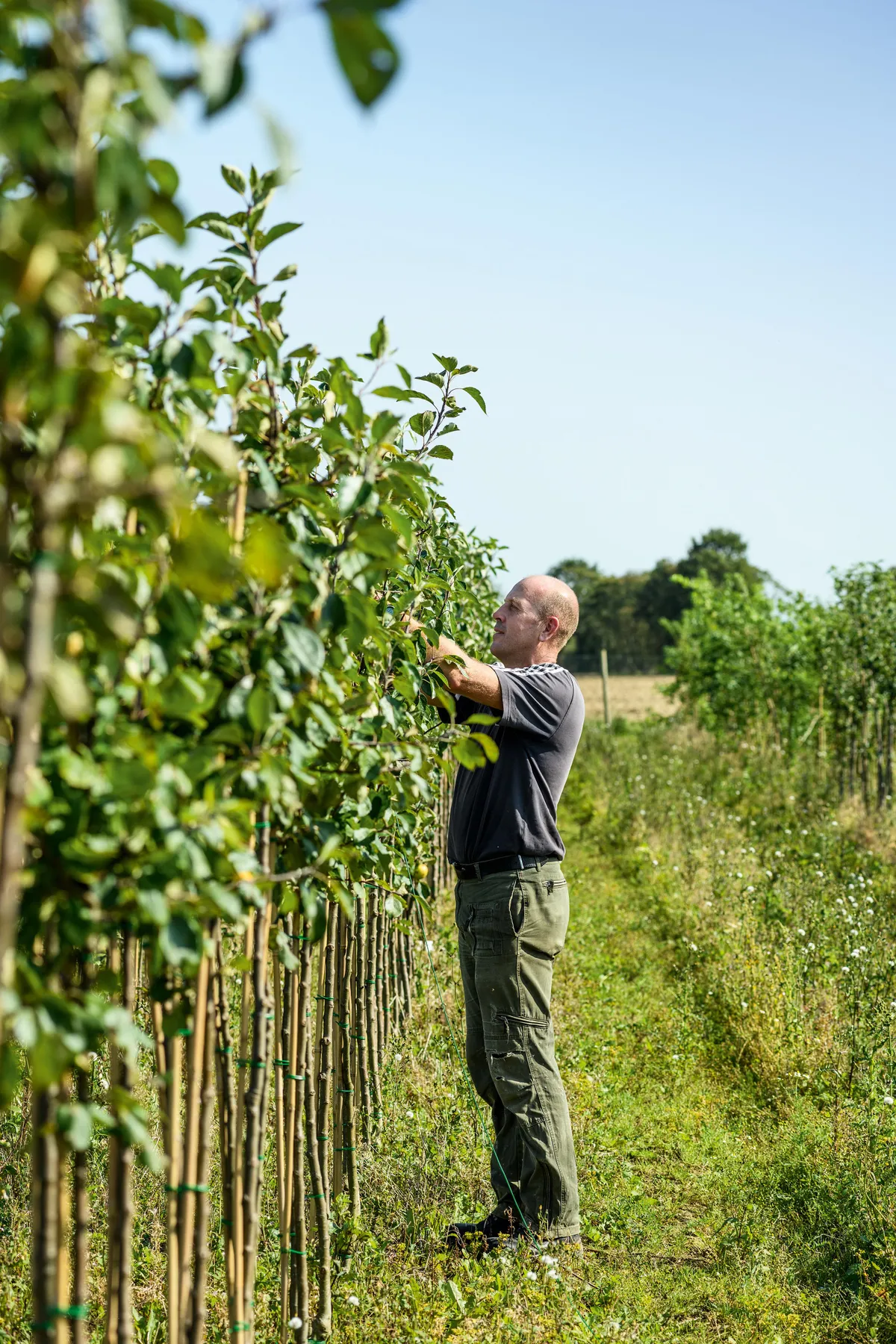
Today, the farm and nursery extends to 200 acres and with 70-80 acres cultivated with field-grown stock at any one time, in a complex rotation system encompassing; traditional farming, and fruit trees. Ian Roger, managing director and grandson of the founder, leads a passionate team of 20, who use traditional horticultural and land management techniques passed down through three generations. “Many of our team, like me, have worked alongside their fathers and grandfathers within the nursery and have horticulture in their blood,” says Ian with some pride.
How to train apple trees
Espalier apple trees
The most common form of decorative training. Usually with two to four branches on either side. Ideal for space saving, training against a wall or a fence.
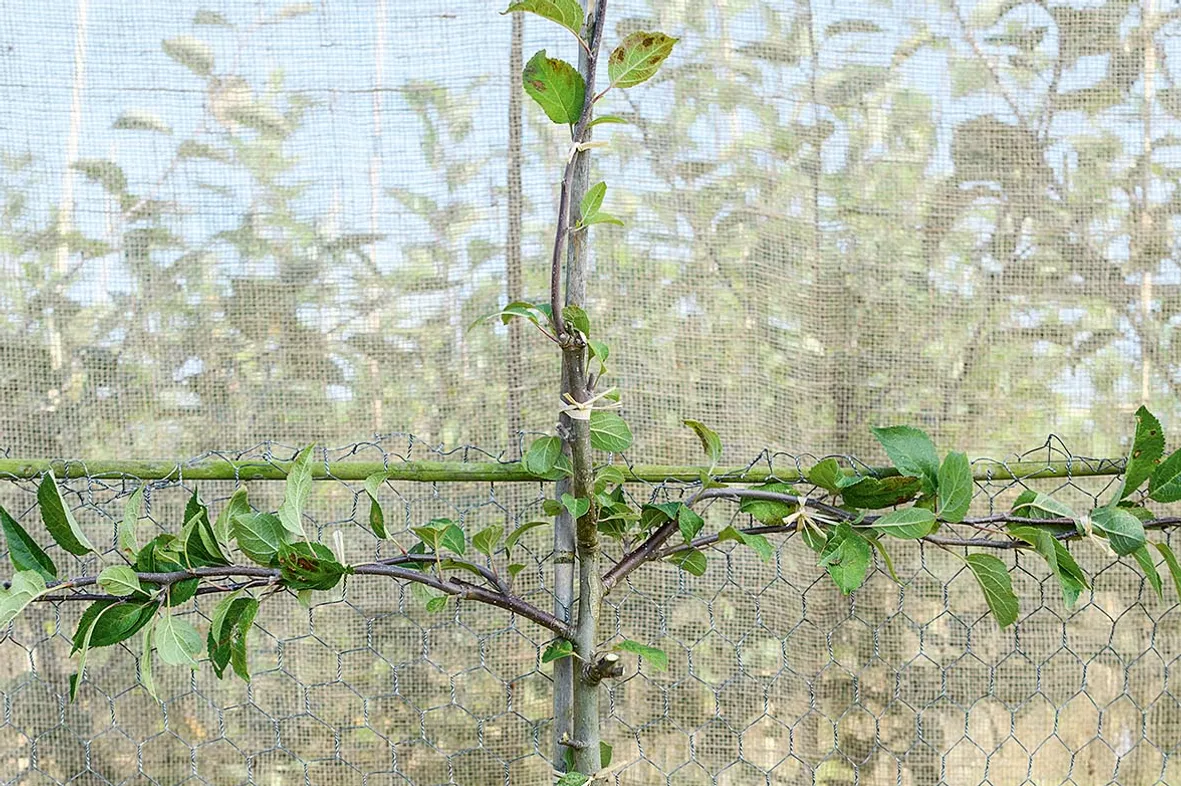
Bush Tree
Ideal for small gardens and maximum productivity. With the aim of roughly six main branches with an open centre, grown to a maximum of 3m high.
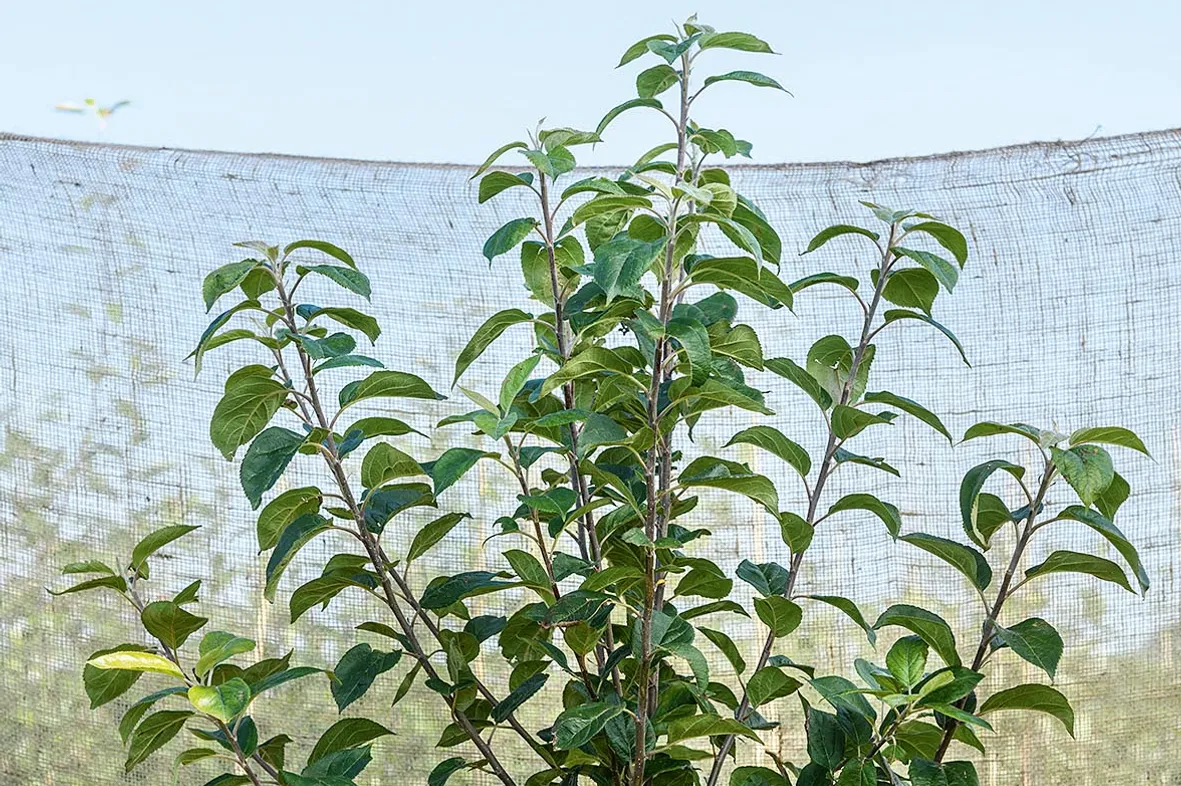
Traditional fan
Also ideal for training against a wall or fence. A very attractive decorative and high-yielding form, ideal for space saving and combining ornamental and productive gardening.
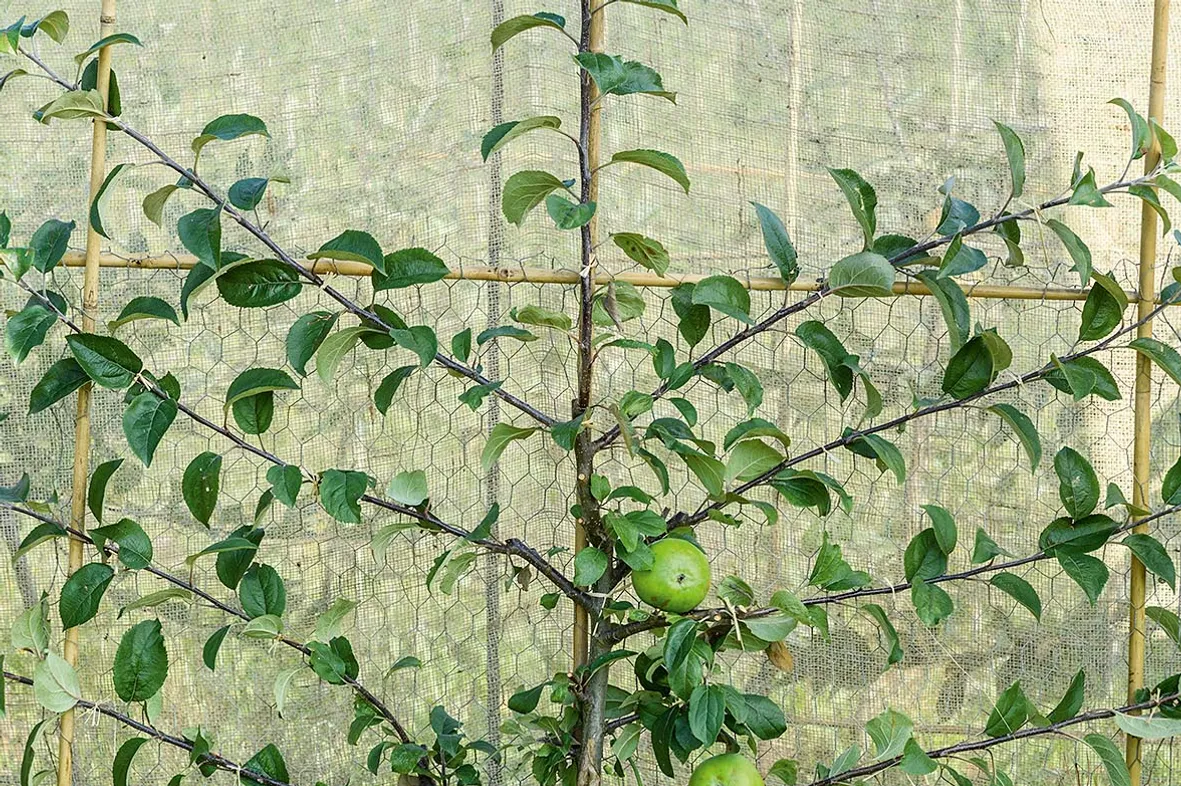
Belgian Fence
A very attractive and decorative lattice-like pattern, were multiple trees are planted close together and branches are trained at a 45-degree angle to overlap one another. 5 Handrail Trained like a step-over but to around waist height, with just one tier of branches. Looks good around the edge of a vegetable garden and is easy to maintain.
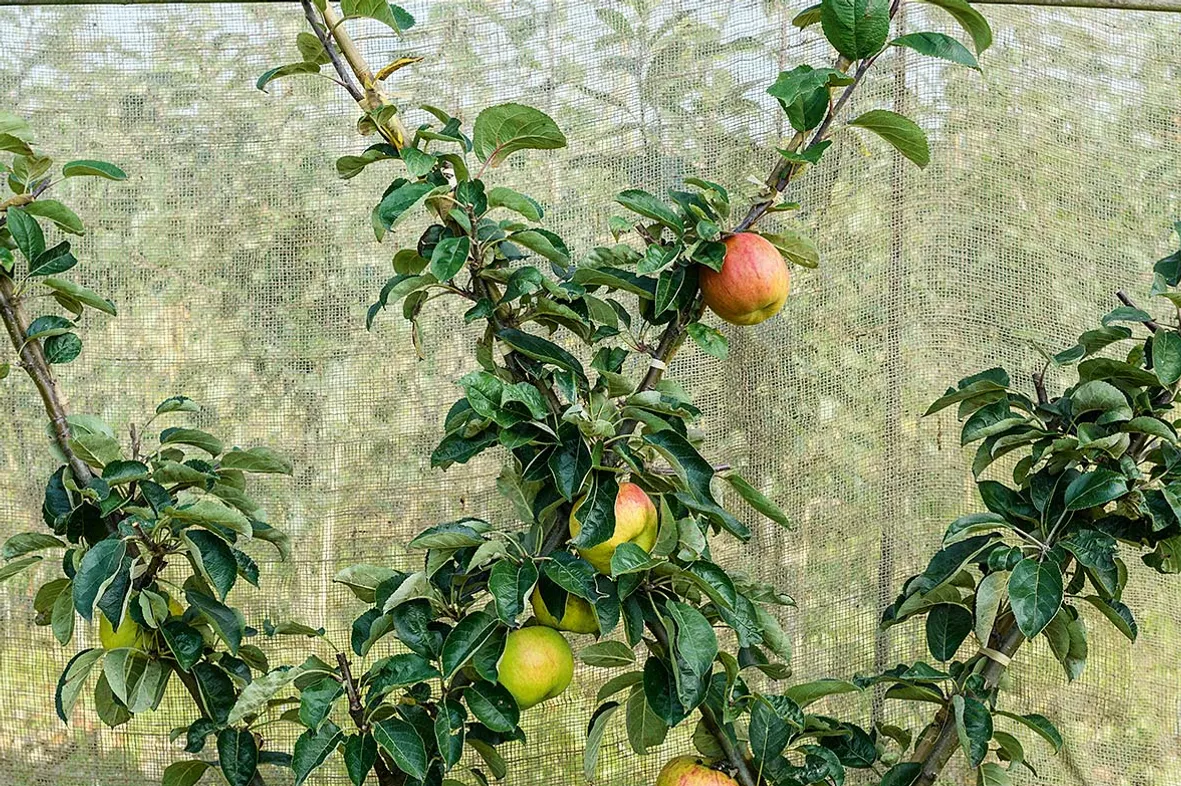
Handrail
Trained like a step-over but to around waist height, with just one tier of branches. Looks good around the edge of a vegetable garden and is easy to maintain.
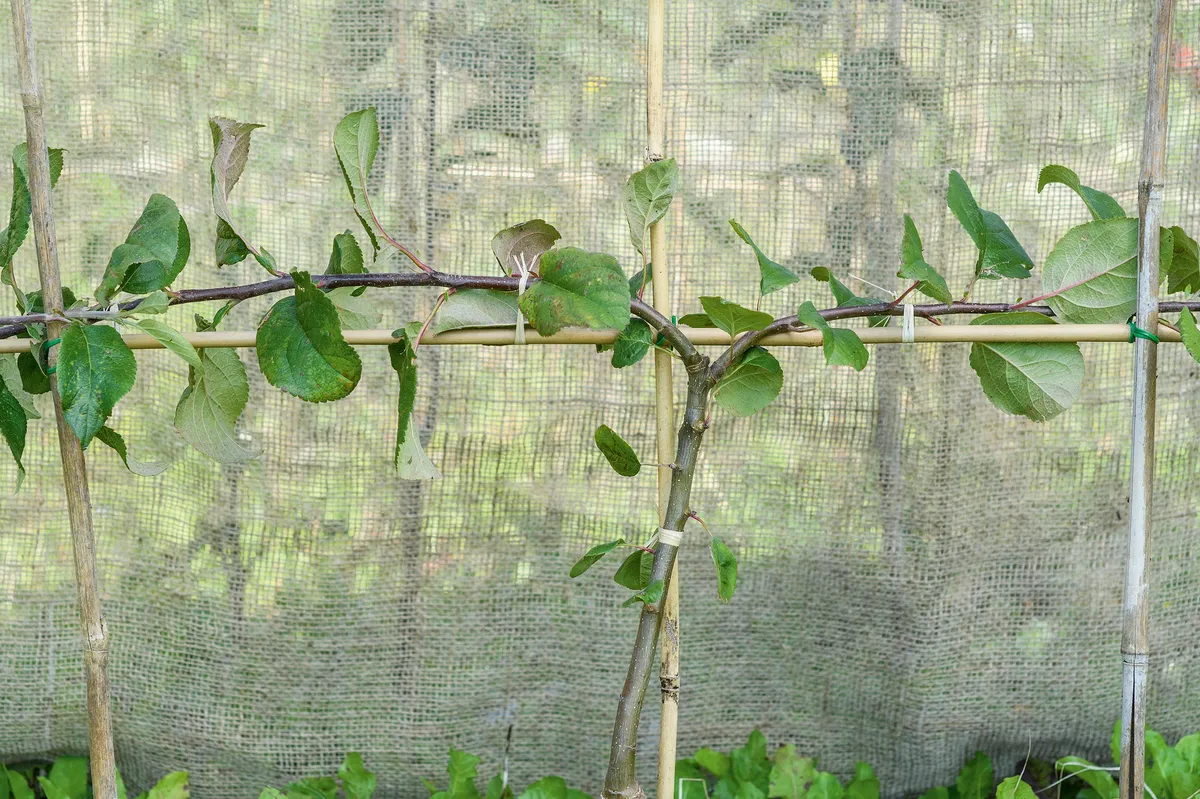
Out in the fields propagation of new fruit trees begins with the planting of root stocks in late winter, followed by bud grafting in July. This yields a 90-95 per cent success rate and any rootstock with a failed bud graft will be re-grafted using the traditional whip-and-tongue technique the following March. This process produces a field-grown maiden (a single stem young fruit tree roughly 1-2m), ready for bareroot sale in November, a 16-month process from graft to sale.
All the trees produced are field grown and lifted specifically to order. The major advantage to this process is in the root development; by allowing the root system to develop an association with the soil rather than in a pot helps to form a more robust and vigorous tree that once transplanted will establish well and yield plentiful fruit. The hardiness and frost tolerance of each cultivar can also vary greatly, often depending on the origin of the cultivar. Many bred in the south of England will not crop as prolifically in the colder regions of the north, but these trees have northern grit, and thankfully many of the cultivars grown here have been introduced from as far north as Edinburgh.
Useful information
Address Malton Road, Pickering, North Yorkshire YO18 7JW. Tel 01751 472226.
Web rvroger.co.uk
Open Monday to Saturday, 8am-5pm; Sunday 10am-4pm. Also offers mail order.
